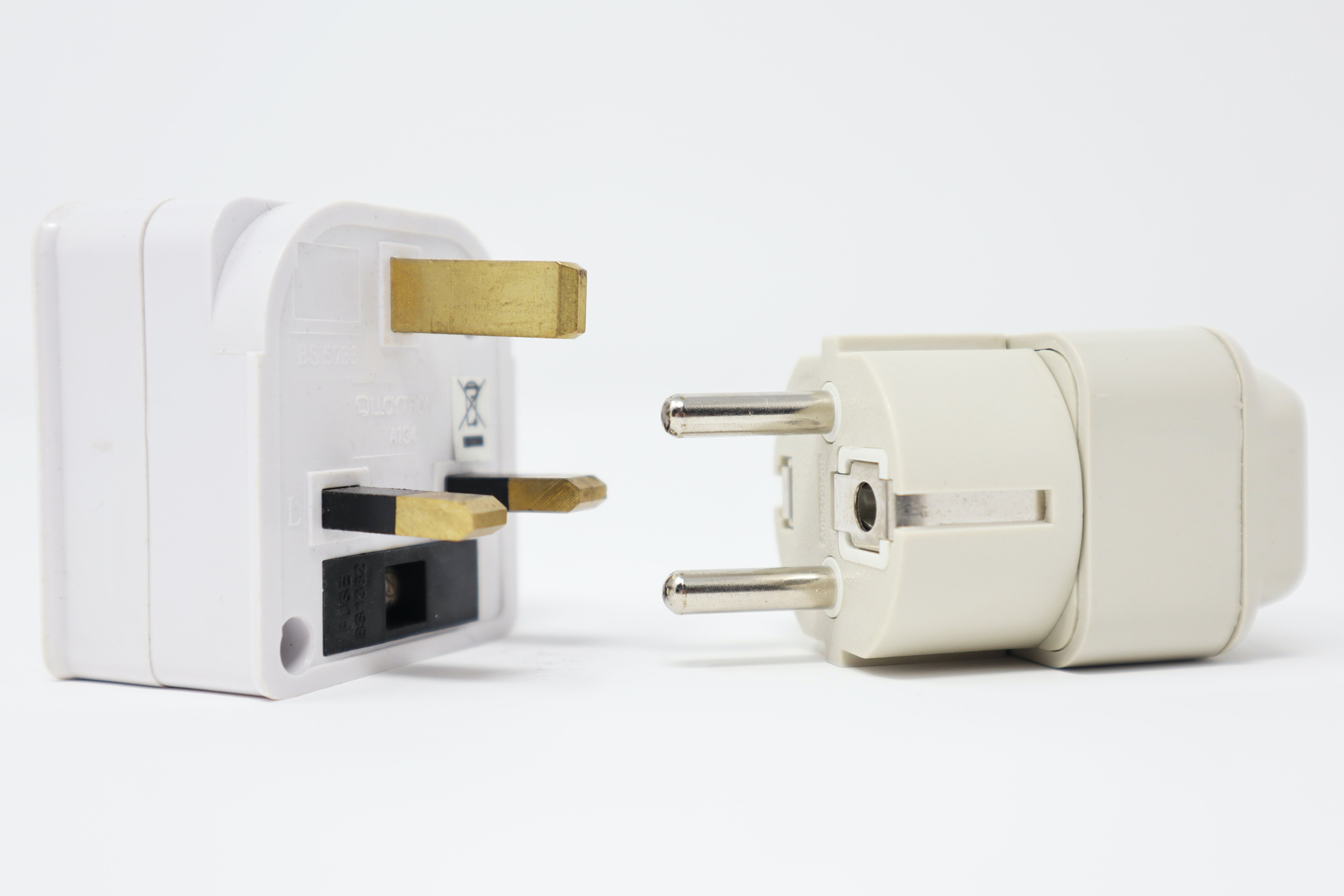Adapters and Converters in Europe

Understanding the Difference in Voltage
In North America, our electricity comes out of our wall sockets at 110 volts (110V), and everything we purchase to plug into the walls of our homes, offices, or outdoors has been manufactured to work on 110V. Contrarily, most of Europe utilizes a 220-volt (220V) system. It follows then that people are purchasing drills, phones, stereos, and TVs which are manufactured to work on 220V and everything works perfectly. To know whether your appliance or smart device will work in Europe with just an adapter, look for a sticker or a printed area on the item or its AC adapter that states something like “Voltage: 110.” In the case of dual voltage devices, the phrase “110–220V” will be printed somewhere on the item or its plug.
Finding & Purchasing the Correct Adapter(s)
It isn’t just the voltage that's different in Europe. The wall outlets and sockets are also shaped differently, and can’t accommodate American AC wall adapters or chargers without the right kind of adapter. For travel to Europe, you can find superior quality adapters for 110-to-220V at very reasonable prices. Be mindful when shopping for international adapters for U.S. appliances and devices. Pay close attention or you could wind up with a plug for Japan or China. One of the bigger points to note when it comes to shape is that in the U.K., voltage is the same as most of mainland Europe, however the outlets—and therefore adapters—are shaped differently. If you have a stopover in the U.K., keep in mind you might want to get a universal European adapter.

There are several with which you can alternate the plug positioning to fit different outlets. 110–220V adapters can be shaped like rectangular hexagons, or could be circular. It’s imperative to understand that these adapters—regardless of the part of the world they’re for—don't convert electricity. An adapter allows your devices with American plugs to fit into the outlets wherever you're going. If your device isn’t built for 220V, or can’t convert 110V to 220V, it could short-circuit or break.
Newer Devices Make for Easier Connectivity
More modern devices, those made in the past five years or so, are going to have the dual voltage we discussed above. This makes life on the go in Europe much easier because all you need to purchase is an adapter or two. You can find great adapters online or at your local big-box retailer at prices that range from $.99–$9. There are other universal adapter sets worth your money if you're a world traveler—they include adapters for anywhere in the world, usually at a cost of $9–$25. An important note: having a great international adapter kit doesn't mean your dual voltage device will be safe to plug in anywhere in the world. The dual voltage referred to on your smartphone or tablet is 110–220V and some countries work on 100V, 115V, 127V, 230V, or 240V. Your dual voltage device will be safe everywhere in mainland Europe. It’s best to keep in mind that Austria, Belgium, Bulgaria, Malta, Monaco, Netherlands, Poland, Romania, and Spain all run on 230V. This shouldn’t have any effect on how your appliances or tech devices work. Just like at home though, if you start to smell something funny around the outlet, unplug the item immediately.
Why You Might Want to Pick Up a Converter
You only need a converter if you’re using a device that cannot convert 110V to 220V. Today’s smartphones, tablets, and most devices are able to withstand both 110V and 220V electricity without damage because they’ve been manufactured as dual voltage appliances. These newer devices can plug and play—all you need to do is attach the adapter to the plug or charger before plugging it into the European outlet.
On the contrary, flip phones, older laptops, and any device older than around ten years will more than likely become damaged without the use of a converter. Converters can be heavy, cumbersome, and the user must configure both the converter and the adapter into wall outlets before being able to plug in gadgets or appliances.
If you’re worried about your devices, the best bet is to go online and look up their ability to convert the voltage or if they were manufactured as a dual voltage appliance. Shop around, figure out what works best for your travels and devices. Like travel, once you’ve done some research, and made the right purchases, you’re basically good to go!







